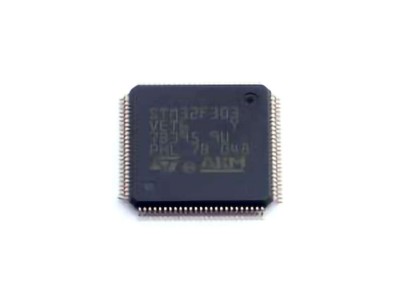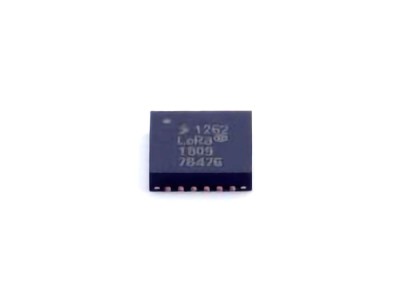The TL431BQDBZR is a popular and versatile precision shunt regulator widely used in Voltage Reference circuits. This article explores its applications in various fields, including Power supply design, voltage regulation in Instrumentation , and energy-efficient systems. With an in-depth focus on how it enhances performance, stability, and accuracy, we will showcase specific use cases that highlight its significance in today's advanced electronic designs.
TL431 BQDBZR, precision voltage reference, voltage regulation, shunt regulator, electronics, power supply design, precision circuits, energy-efficient systems, voltage references, TL431 application examples
Introduction to TL431BQDBZR and Its Role in Voltage Reference Circuits
In the modern world of electronics, precision voltage references play a pivotal role in ensuring accurate measurements, stable outputs, and optimal system performance. Among the various components that enable this accuracy, the TL431BQDBZR is one of the most prominent choices for engineers designing voltage reference circuits. This adjustable shunt regulator combines the characteristics of a voltage reference with the flexibility of a regulator, making it a powerful tool in many applications, from power supply designs to instrumentation.
The TL431BQDBZR Overview
The TL431BQDBZR is a three-terminal adjustable shunt regulator, often regarded as a "precision voltage reference." It is based on a high-precision bandgap reference circuit that allows for a stable output voltage regardless of fluctuations in input voltage or load conditions. The primary advantage of the TL431BQDBZR lies in its versatility; it can be configured to output a wide range of reference voltages by adjusting the resistor network around the device.
The device operates as a shunt regulator, which means it can sink current while maintaining a constant voltage across its terminals. This makes it ideal for applications requiring a stable reference voltage, as the TL431BQDBZR can be set to maintain a precise voltage regardless of variations in the input supply. Furthermore, its low dropout voltage (typically around 2V) makes it suitable for low-voltage applications, ensuring high efficiency in systems where power consumption is critical.
Why Choose TL431BQDBZR for Precision Circuits?
There are several reasons why the TL431BQDBZR has become a go-to choice for engineers when designing precision voltage reference circuits:
Accuracy and Stability: The TL431BQDBZR is known for its high accuracy and low temperature coefficient, ensuring that the reference voltage remains stable over a wide range of environmental conditions.
Adjustability: Its adjustable nature allows the output voltage to be fine-tuned, making it adaptable to different circuit requirements.
Ease of Use: The device is relatively simple to implement, requiring only a few external components (typically resistors) to set the desired reference voltage.
Cost-Effectiveness: Compared to traditional voltage reference diodes or more complex voltage reference ICs, the TL431BQDBZR offers an affordable solution without sacrificing performance.
Key Applications of TL431BQDBZR in Voltage Reference Circuits
Power Supply Design: One of the primary uses of the TL431BQDBZR is in power supply circuits. In these applications, it acts as a reference to ensure that the output voltage remains stable under varying load conditions. It is commonly found in low-dropout regulators (LDOs), where it provides a precise reference to regulate the output voltage.
Instrumentation: Accurate voltage references are essential in instruments like digital voltmeters, oscilloscopes, and other measurement devices. The TL431BQDBZR ensures that these instruments provide precise readings, even when the input power supply fluctuates.
Battery-Powered Systems: For systems where power efficiency is crucial, such as in battery-powered electronics, the low dropout voltage of the TL431BQDBZR helps maximize battery life while maintaining stable performance.
Practical Application Examples of TL431BQDBZR in Precision Voltage Reference Circuits
Example 1: High-Precision Voltage Regulator for Power Supplies
One of the most common applications of the TL431BQDBZR is in the design of high-precision voltage regulators for power supplies. When designing a power supply that needs to provide a stable voltage to sensitive components, such as microcontrollers, sensors, or communication devices, precision is key. Variations in input voltage or load current can lead to instability or inaccuracy in the output, potentially damaging the components connected to the power supply.
Using the TL431BQDBZR in a feedback loop within an LDO (Low Dropout Regulator) circuit can significantly enhance the accuracy of the regulator. In this configuration, the TL431BQDBZR serves as the voltage reference to maintain a constant output voltage. For instance, consider a power supply designed to output a stable 3.3V to power an embedded system. By using the TL431BQDBZR, the designer can ensure that the output voltage remains within a tight tolerance range, even if the input voltage or load current fluctuates. The ability to adjust the reference voltage by selecting appropriate external resistors allows engineers to fine-tune the output to match the specific voltage requirements of the system.
In a typical LDO circuit using the TL431BQDBZR, the device is connected in a feedback loop with an error amplifier, which compares the output voltage to the reference voltage. The error amplifier adjusts the pass transistor to regulate the output voltage accordingly. This simple yet effective circuit can be used in a variety of power supply designs, from low-voltage supplies in battery-operated devices to higher-power systems.
Example 2: Voltage Reference for Analog-to-Digital Converters (ADC)
Another significant application of the TL431BQDBZR is as a stable voltage reference for Analog-to-Digital Converters (ADCs). ADCs are used to convert an analog signal, such as temperature, pressure, or voltage, into a digital value that can be processed by a microcontroller or other digital system. For ADCs to provide accurate digital output, the reference voltage needs to be stable and precise, as any variation in the reference voltage will directly affect the accuracy of the conversion process.
In this application, the TL431BQDBZR can be used as a highly accurate voltage reference for the ADC. By providing a stable reference voltage, the TL431BQDBZR helps ensure that the ADC operates within its specified accuracy range. For example, a 10-bit ADC might require a reference voltage of 3.3V to achieve a resolution of 0.0032V per step. If the reference voltage drifts due to temperature changes or power supply fluctuations, the ADC’s output will become inaccurate. By using the TL431BQDBZR, the reference voltage remains stable, providing consistent and reliable ADC readings.
In an ADC application, the TL431BQDBZR is typically configured with a resistor divider to set the output voltage at the desired reference level. Its high accuracy ensures that the ADC's resolution is not compromised, even in environments where other factors, such as temperature or supply voltage variations, may cause other reference voltages to fluctuate.
Example 3: Battery Management Systems (BMS)
Battery management systems (BMS) are crucial in monitoring and managing the performance of rechargeable batteries, especially in applications like electric vehicles (EVs), portable electronics, and renewable energy systems. One of the key functions of a BMS is to monitor the voltage levels of individual cells or battery packs, ensuring that they operate within safe voltage ranges.
In a BMS, the TL431BQDBZR can serve as a precise voltage reference to monitor and regulate the voltage of the battery pack. For instance, in a system where multiple cells are connected in series, the TL431BQDBZR can be used to create a voltage threshold that triggers protection mechanisms when the battery voltage falls outside the acceptable range. The low dropout voltage of the TL431BQDBZR ensures that the voltage reference remains stable even as the battery voltage drops, which is crucial for the early detection of undervoltage or overvoltage conditions.
Moreover, the adjustability of the TL431BQDBZR allows for fine-tuning the voltage threshold for different battery chemistries and voltage configurations. This flexibility makes it an ideal component for use in various BMS designs, where battery protection and performance monitoring are critical.
Conclusion: TL431BQDBZR - A Vital Component in Modern Electronics
The TL431BQDBZR is a highly versatile and reliable precision voltage reference that has found widespread use across a variety of applications, from power supplies to instrumentation and battery management systems. Its ability to provide a stable and accurate reference voltage, coupled with its adjustability and cost-effectiveness, makes it an essential component in modern electronic circuits.
By leveraging the TL431BQDBZR, engineers can design circuits that maintain precision, stability, and efficiency across a wide range of conditions. Whether it's ensuring accurate power delivery in a voltage regulator, enhancing the performance of an ADC, or safeguarding battery health in a BMS, the TL431BQDBZR proves to be a valuable tool in the design of precision voltage reference circuits.
As electronic systems continue to grow more sophisticated and energy-efficient, components like the TL431BQDBZR will play an increasingly important role in achieving the level of accuracy and reliability required by the latest technologies.
Partnering with an electronic components supplier sets your team up for success, ensuring the design, production, and procurement processes are quality and error-free.

